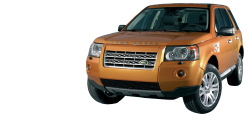
|
|
| Home · FAQ · New Posts · My Posts · PMs · Search · Members · Members Map · Calendar · Profile · Donate · Register · Log In |
 | Home > Technical > Clutch Slipping |
 
|
|
|
| 7Iron Member Since: 06 Jan 2009 Location: Near the sea and the golf course Posts: 35  
|
After starting this post 31000 miles ago the clutch replaced under warranty has failed at 58000, today had the following parts fitted.
|
||
|
| Andy131 Member Since: 10 Dec 2009 Location: Manchester Posts: 2161 
|
Do I understnd the setup right?
|
||
|
| 7Iron Member Since: 06 Jan 2009 Location: Near the sea and the golf course Posts: 35  
|
It's amazing what a good bottle of wine will do !
|
||
|
| 7Iron Member Since: 06 Jan 2009 Location: Near the sea and the golf course Posts: 35  
|
Superspark, That sounds to me more likely than the DMF as root cause, ironically the pedal load on the new clutch does seem higher than the one removed |
||
|
| Pegleg Member Since: 15 Apr 2010 Location: Deep in mid Wales Posts: 3114  
|
Increased pedal load might be understanderable with a cable.
|
||
|
| 7Iron Member Since: 06 Jan 2009 Location: Near the sea and the golf course Posts: 35  
|
Pedal load should be proportional to spring pressure so would expect that if I have to push harder that I am working against a higher load, no science here though, it only feels firmer |
||
|
| Oceantreader Member Since: 03 Feb 2013 Location: Gaydon Posts: 25  
|
Nice animation of a DMF can be found here
|
||
|
 
|
|
| All times are GMT + 1 Hour |
< Previous Topic | Next Topic > |
Posting Rules
|
Site Copyright © 2006-2024 Futuranet Ltd & Martin Lewis
![]()


